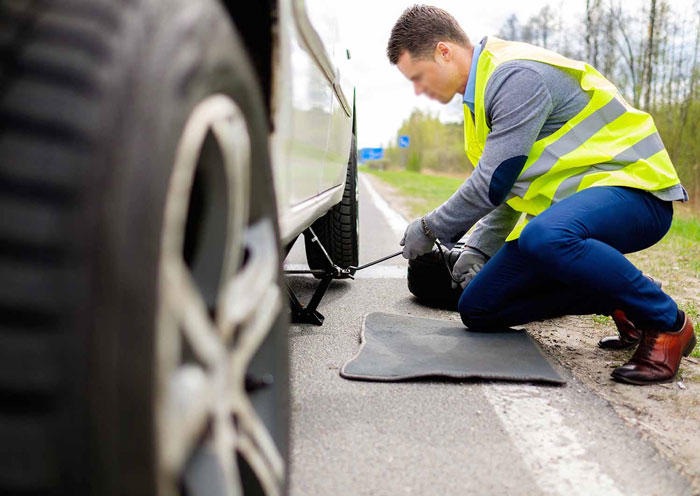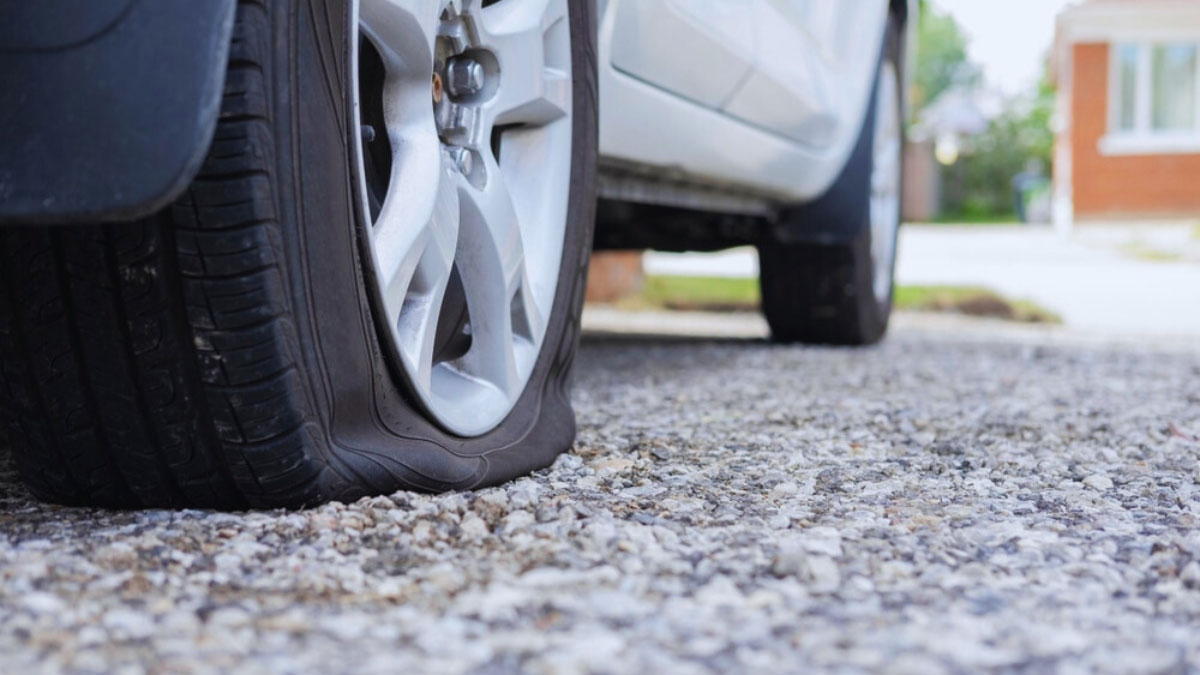Facing a flat tire on the road can be a real inconvenience, but knowing how to handle the situation can save you time and money. In this guide, I’ll walk you through the step-by-step instructions to fix a flat tire quickly and get back on the road in no time.
Whether you’re a seasoned driver or new to handling car troubles, having the knowledge to address a flat tire is a valuable skill. From gathering the necessary tools to safely jacking up your vehicle, I’ll cover each essential step to ensure a smooth and efficient tire repair process.
By following these practical instructions, you’ll be equipped with the confidence and know-how to tackle a flat tire situation whenever it arises. Let’s dive into the simple yet crucial steps that will empower you to handle this common road mishap like a pro.
Necessary Items for Fixing a Flat Tire
To fix a flat tire efficiently, having the right tools is essential. Here are the necessary items you need:
- Spare Tire: It’s crucial to carry a spare tire in good condition that matches the specifications of your vehicle.
- Jack: A jack is needed to lift the vehicle and remove the flat tire easily.
- Lug Wrench: This tool helps loosen and tighten the lug nuts securing the tire.
- Flashlight: A flashlight is handy, especially in low light conditions, to inspect the tire and work on it effectively.4
- Tire Pressure Gauge: Check the tire pressure before and after the repair to ensure it’s at the recommended level.
- Pliers: Pliers can be helpful for removing nails or other objects stuck in the tire.
- Gloves: Protect your hands with gloves while handling the dirty tire and tools.
- Mat or Piece of Cardboard: Place this under the jack to provide stability on uneven terrain.
- Reflective Triangle: It’s important to have a reflective triangle to alert other drivers about your stopped vehicle for safety.
Having these items ready in your vehicle will help you tackle a flat tire situation swiftly and efficiently.
Preparations Before Changing the Tire
Before diving into changing a flat tire, it’s crucial to ensure safety and proper parking to avoid any mishaps during the repair process. Gathering the essential tools beforehand is key to a smooth tire replacement experience. Additionally, using safety devices like wheel wedges adds an extra layer of security to the tire-changing process.

Ensure Safety and Parking
I always prioritize safety when fixing a flat tire. When preparing to change a tire, make sure to park your vehicle on a flat, stable surface away from traffic. Engage the parking brake to prevent any rolling. For additional safety, turn on hazard lights and place a reflective triangle a safe distance behind your vehicle to alert other drivers.
Gather Essential Tools
Having the necessary tools on hand is essential for efficiently changing a tire. Gather a spare tire, jack, lug wrench, flashlight, tire pressure gauge, pliers, gloves, and a mat or cardboard to kneel on. These tools will facilitate a quick and effective tire replacement process without any delays.
Use Safety Devices like Wheel Wedges
To further enhance safety during a tire change, consider using wheel wedges. Wheel wedges prevent the vehicle from rolling while the tire is being replaced, especially on uneven surfaces. Placing wheel wedges on the opposite end of the flat tire ensures that your vehicle stays securely in place throughout the repair process.
Step-by-Step Instructions for Changing a Flat Tire
I’ll guide you through the process of changing a flat tire with these easy steps.
Step 1: Remove Hubcap or Wheel Cover
To access the lug nuts, the first step is to remove the hubcap or wheel cover.
Step 2: Loosen the Lug Nuts
Using the lug wrench, loosen the lug nuts but do not remove them completely at this stage.
Step 3: Position and Lift the Vehicle with Jack
Place the jack in the designated lifting area, typically beneath the vehicle’s frame, and lift the vehicle off the ground.
Step 4: Fully Remove the Lug Nuts
You can fully remove the loosened lug nuts and take off the flat tire.
Step 5: Replace the Flat Tire with Spare Tire
Position the spare tire on the wheel studs and hand-tighten the lug nuts.
Step 6: Securely Mount the Spare Tire
Use the lug wrench to tighten the lug nuts in a crisscross pattern to ensure secure mounting.
Step 7: Lower the Vehicle and Tighten Lug Nuts
Carefully lower the vehicle back to the ground using the jack and then tighten the lug nuts firmly.
Step 8: Perform Final Safety Checks
Double-check all lug nuts for tightness and ensure the spare tire is securely in place before driving off.
Additional Tips for Tire Maintenance and Safety
Maintaining good tire condition is crucial for safe driving. Here are some additional tips to help you keep your tires in top shape and stay safe on the road:
- Regular Tire Inspections: Check your tire pressure at least once a month and before long trips. Look for any cuts, bulges, or other signs of damage that may indicate the need for tire replacement.
- Proper Tire Rotation: Rotate your tires according to the manufacturer’s recommendation, typically every 5,000 to 7,000 miles. This helps to ensure even tread wear and extends the life of your tires.
- Wheel Alignment: Get your wheels aligned at least once a year or if you notice irregular tire wear, steering issues, or a crooked steering wheel. Proper alignment prevents premature tire wear and improves handling.
- Balancing: Have your tires balanced whenever you get them rotated or if you feel vibrations while driving. Balanced tires help maintain stability and extend tire life.
- Avoid Overloading: Check your vehicle’s manual for the recommended load capacity. Overloading can cause excessive tire wear and potential blowouts.
By following these additional tips on tire maintenance and safety, you can ensure that your tires are in optimal condition, reducing the risk of flats and enhancing overall road safety.
Conclusion
Maintaining proper tire care is crucial for safe and smooth travels. By following the step-by-step instructions outlined in this guide and incorporating regular tire maintenance practices, such as inspections, rotation, alignment, and balancing, you can enhance your vehicle’s performance and safety on the road. Remember, a well-maintained tire not only reduces the chances of a flat but also contributes to overall road safety. Stay prepared, stay safe, and enjoy hassle-free journeys with well-maintained tires.
Frequently Asked Questions
What are the essential steps to efficiently fix a flat tire on the road?
Gather necessary tools: spare tire, lug wrench, jack, and wheel wedges. Loosen lug nuts, lift car using jack, and remove flat tire. Place spare tire on, tighten lug nuts by hand, lower car, and finish tightening lug nuts securely.
How can tire maintenance contribute to road safety?
Regularly inspect tires for wear and damage. Ensure proper tire rotation, wheel alignment, and tire balancing. Avoid overloading your vehicle to prevent premature tire wear and potential flats.
Can a repair kit be used to fix a flat tire on the road?
Yes, a repair kit with sealant and air compressor can be used to patch a flat tire. Follow the detailed instructions provided in the kit for easy repair.

